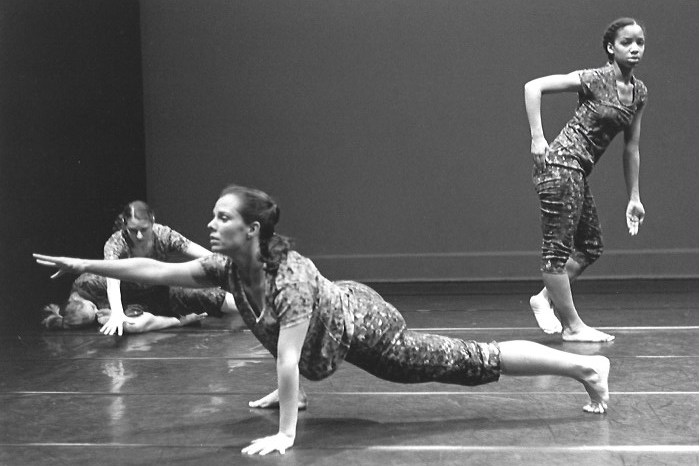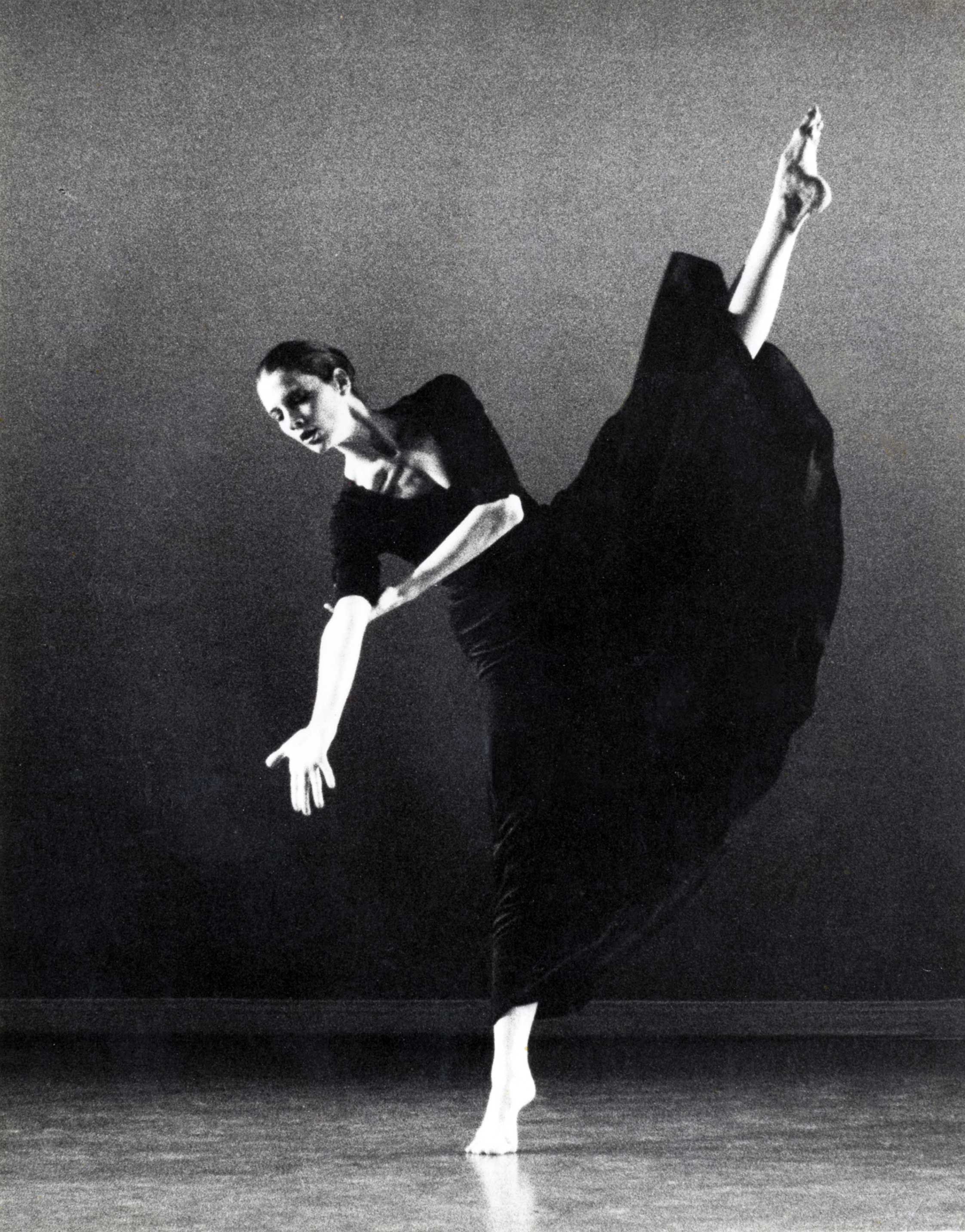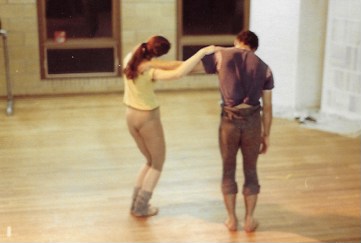From April 9–13, 2002 the dance company was in residence at Westchester Reform Temple (WRT) in Scarsdale, New York. The company had a longstanding relationship with the congregation, as the senior rabbi, Rick Jacobs, had been a member of Avodah for six years in the 80’s. JoAnne also regularly led workshops there, and the company’s week of exploration with Ulla (See blog) was held there.
As with each residency, prior to coming, JoAnne met with the leadership to determine how to best serve the community. Rick wanted to schedule the time around Yom HaShoah, (Holocaust Memorial Day). He wasn’t interested in members of the congregation participating in the Forgiveness Piece itself but thought that maybe congregants could participate in I Never Saw Another Butterfly instead and that could be part of the Friday night Shabbat service. In addition, our new Holocaust piece Heroic Deeds (see Blog ) would also fit in very well. A new piece I had just choreographed called Tent, Tallit and Torah also appealed to him. Now… when would we do the Forgiveness Piece? He suggested we do it at his staff meeting time on Wednesday and I agreed especially if the full staff could be there which would include clergy, maintenance staff, teachers and secretaries. The company would lead a workshop and then afterwards the company members would perform the Forgiveness Piece. This would be our only residency in which community members did not participate in the piece itself.
Again, I am very grateful to Kezia for her notes of the very busy day on Wednesday, April 13that the congregation. It included a workshop for staff with a performance, a lecture-dem for pre-schoolers, a workshop for 16-year-olds and participation in two Holocaust Memorial services for 6th, 7thand 11th/12thgraders.
Kezia described the forgiveness workshop with the full staff so beautifully that I include her notes here:
JoAnne began by instructing all participants (including the company dancers) simply to walk throughout the room. As they did so, accompanied by percussionist Newman Taylor Baker, Tucker provided a continuous stream of movement instructions which were both fun and purposeful in directing participants’ exploration of elements of movement. Moreover, the participants in the room quickly became peers in executing the assignments to navigate through imaginary peanut butter or jello, to move as quickly as possible, to make sudden changes of direction, or to focus on moving certain parts of the body. There was 100% participation, and smiles were plentiful.
Tucker gradually introduced interaction through movement, building from a simple greeting when passing, to structured mirroring in pairs (whereby one partner must become the mirror image of the other, as they move together). At Tucker’s direction, pairs were constantly dissolved and formed anew, so each participant worked with many others, creating partnerships that may not occur on a daily basis – rabbi with maintenance worker, cantor with secretary, pre-school teacher with high school teacher. Additionally, within pairs, roles were rotated, so each participant experienced being both “a leader” and “a follower” within each of these distinct partnerships.
At this point, when movement skills were sharpened and the group appeared at ease moving, Tucker asked the group to verbally brainstorm “blocks to forgiveness.” A range of replies were offered and visibly considered by the group, as evidenced by nodding heads and comments such as “I never thought of that.” Using the tools they had just developed, the group explored the ideas suggested, through further mirroring and then through paired “conversations in movement.” All pairs were intently focused and, based on the coordinated timing and complementary style of their created movements, indeed appeared to be successfully “conversing.” The Rabbi later revealed to Tucker and me that several of these participants, in their everyday interaction, refuse to speak to each other.

a conversation together in movement.
The final participatory portion of the workshop was an activity by which participants, through movement, “shared a hurt” with others. With insight and a sense of humor, the groups ended this exercise with the Rabbi on the floor, so overloaded with everyone’s “sharing” that the group had to lift him. To resolve the overwhelming “hurt,” the group, at Tucker’s instruction, passed a “letting go” movement around the circle of participants, and the last person, at her own initiative, threw the “hurt” out of the circle.

The participants then watched a performance of the Forgiveness Project piece (without community involvement). At the conclusion of the piece, there was no applause. The viewers attributed their silence to being stunned by the piece’s intensity, not to lack of appreciation. One participant asked whether she was supposed to interpret intellectually what she had just seen. A dancer pointed out that, just as the percussion instruments in an earlier activity had immediately invoked different emotions without requiring any intellectual articulation of “why,” so dance can deeply affect a viewer without requiring a verbal analysis. The Rabbi pointed out that “Forgiveness itself is not just intellectual.” Another participant noted that it was helpful to have done the movement exercises before seeing the piece. The Rabbi was curious as to whether performing the piece regularly “heals” tensions with the dance company; in response, one dancer discussed dance as a levelizer”; another dancer pointed out that using movement allows any group, with any “issues,” to have a chance to communicate without having to talk – to be thrown into a new activity together, to have fun. A few of the participants nodded in agreement, and the Rabbi mused, “Maybe we should have all our staff meetings like this.”
I am very grateful to Kezia for keeping such careful notes of the workshop and have included them without any edits, as particularly the paragraphs before the last could serve as a model for someone leading a movement workshop on the theme of forgiveness.
I found the workshop to be a very meaningful part of the residency at the congregation. However, I was disappointed that we were not able to involve more of the congregation in the theme of forgiveness, or involve community in a performance of the piece,as I found those performances much more meaningful for the audience.
Of course, it is important to respond to the needs of the community, and the leadership felt that focusing on Yom HaShoah for the balance of the activities was more appropriate. In Part II, I will share how we engaged some members of the congregation in the Friday night service, and describe the other pieces we integrated into the service.

[print_link]













